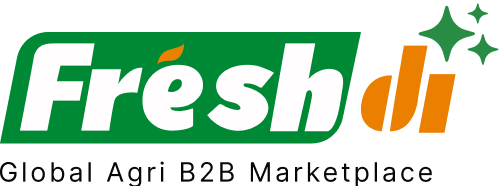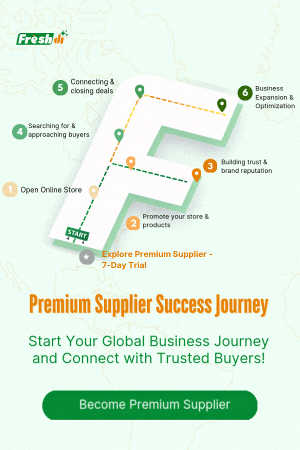Introduction – Exploring France’s Reputation for Quality Seafood
When it comes to premium seafood, France is a global standout. Why? It’s all about location, tradition, and a deep-rooted passion for quality. France’s unique geography—with coastlines stretching along the Atlantic Ocean, the Mediterranean Sea, and the English Channel—gives it access to some of the richest marine biodiversity in Europe. Regions like Brittany and Normandy are seafood havens, producing everything from oysters to mussels with unmatched finesse.
But it’s not just nature doing the work. France’s seafood excellence is also a result of centuries-old aquaculture traditions and a national commitment to sustainable practices. Local producers often go beyond just catching seafood—they nurture it, farm it traditionally, and protect it through certifications that guarantee superior quality.
As a business looking to source seafood from France, understanding these nuances can make or break your procurement strategy. From quality certifications to regional specialties, knowing what defines “top-tier” seafood helps you make smarter, more informed buying decisions.
Defining & Verifying Seafood Excellence in France
So, what exactly makes French seafood stand out? It’s not just about taste—though that’s certainly part of it. It’s also about safety, sustainability, and traceability. In France, seafood quality is tightly regulated and often certified through nationally and internationally recognized standards.
Key Certifications to Know
-
Label Rouge – Think of this as the gold medal of French food certification. It guarantees superior taste, strict farming practices, and environmental care. Originally for poultry, it now applies to seafood like oysters and salmon, especially those from Brittany.
-
Pêche Durable – This French eco-label assures that the seafood is caught or farmed sustainably. It’s comprehensive, covering both the fishing process and distribution chain.
-
Marine Stewardship Council (MSC) – A globally recognized certification for sustainable wild-caught seafood. France’s adoption is increasing, especially among exporters targeting eco-conscious markets.
Regional Quality Differences
Each French coastal region brings something unique to the table:
- Northern France (e.g., Normandy) is known for mussels and stringent certification adherence.
- Brittany is famous for oysters and other shellfish, often certified with Label Rouge.
- Southwestern France, especially Marennes-Oléron, produces some of the most prestigious oysters in Europe.
On platforms like Freshdi, you’ll find thousands of RFQs (Requests for Quotations) specifically requesting seafood with these certifications. It’s a clear sign that buyers are prioritizing traceable, certified quality.
Top 8 Verified Seafood Suppliers in France – Pioneering Quality Standards
Looking for reliable seafood suppliers in France? Here are 8 top-rated, verified suppliers leading the market in 2025. These companies have been selected based on international certifications, export volumes, and buyer feedback from platforms like Freshdi.
1. GTSI
Specialty: Dried Sea Cucumber
Why They’re Top: A leader in premium dried seafood, GTSI is known for strict quality control and sustainable sourcing. Popular with Asian and European buyers.
2. Maison Gillardeau
Specialty: Gillardeau Oysters
Why They’re Top: This family-run business is a benchmark for oyster quality. Their oysters are matured longer and have a unique, nutty flavor. Label Rouge certified.
3. Groix & Nature
Specialty: Seafood Tapas and Rillettes
Why They’re Top: Located on the island of Groix, they blend tradition and innovation, offering organic and eco-labeled seafood products.
4. Viviers de Noirmoutier
Specialty: Shellfish (clams, oysters, mussels)
Why They’re Top: Known for sustainable aquaculture and modern depuration systems. Serves both European retailers and gourmet restaurants.
5. Compagnie des Pêches Saint-Malo
Specialty: Wild-caught fish (hake, cod, saithe)
Why They’re Top: MSC-certified with a focus on low-impact fishing methods. Strong presence in Scandinavia and the UK.
6. France Haliotis
Specialty: Abalone
Why They’re Top: One of the few French producers of abalone. Certified organic and known for hand-harvested, slow-grown seafood.
7. La Belle Iloise
Specialty: Canned seafood delicacies
Why They’re Top: A household name in premium preserved seafood. Combines artisanal production with strict food safety standards.
8. Les Viviers de Saint-Colomban
Specialty: Live lobsters and crustaceans
Why They’re Top: Specializes in live exports with a 24-hour catch-to-ship promise. Uses eco-responsible fishing techniques.
Dynamic Ranking Note
Keep in mind, rankings can evolve. Platforms like Freshdi frequently update their “Supplier of the Month” or “Top Exporters of the Quarter” lists based on recent buyer feedback, RFQ fulfillment rates, and certification updates. Always check for the latest rankings when making sourcing decisions.
Market Navigation – Trends in Quality Demand & Global Consumer Preferences
Global consumers are changing how they buy seafood—and France is uniquely positioned to meet these evolving demands.
Sustainability and Traceability Are Non-Negotiable
More than ever, businesses and end consumers want to know where their seafood comes from, how it was caught, and whether it’s sustainable. Certifications like MSC, ASC, and Label Rouge are no longer optional—they’re expected.
Digital traceability tools, including blockchain and QR codes, are being used by suppliers to offer transparency. On Freshdi, many suppliers now include traceability documentation directly on their product listings—a huge plus for buyers.
Convenience Is King
From pre-cooked shrimp to ready-to-eat tuna salads, convenience sells. Younger consumers don’t want to fuss with shells or bones. This demand is pushing French suppliers to develop value-added products that are both premium and easy to prepare.
Premium Products = Bigger Margins
There’s a growing appetite for high-end seafood—think sashimi-grade tuna, dry-aged fish, or organic abalone. Retailers and restaurants can justify higher prices with the right story and certifications to back it up.
Health-Conscious Choices
Seafood is winning over the health-conscious. High in omega-3s and low in saturated fat, it’s the go-to for flexitarians and wellness enthusiasts. Products marketed with health benefits, especially those rich in minerals and vitamins, are flying off the shelves.
Technology Is Driving Change
From AI-powered quality assessments to drones monitoring aquaculture farms, technology is transforming how seafood is sourced, processed, and delivered. French suppliers are increasingly integrating these tools to meet global expectations.
Conclusion – Strategic Sourcing for Quality
Sourcing seafood from France is more than just a smart business move—it’s a commitment to quality, sustainability, and transparency. The country’s rich maritime heritage, strict quality certifications, and innovative suppliers make it an ideal partner for premium seafood procurement.
But to truly succeed, you need to do more than just pick a supplier. Vet their certifications. Understand their regions. Ask the right questions. And most importantly, use platforms like Freshdi to verify supplier legitimacy, track product trends, and stay informed on market shifts.
Whether you’re sourcing scallops for a luxury restaurant or frozen oysters for retail, France offers the quality and reliability your business needs.
Buyer’s Checklist: Sourcing French Seafood
- ✅ Confirm supplier certifications (Label Rouge, MSC, etc.)
- ✅ Check for traceability tools (QR codes, blockchain)
- ✅ Review supplier’s RFQ fulfillment rates on Freshdi
- ✅ Ask about regional sourcing (e.g., Brittany for oysters)
- ✅ Favor suppliers with sustainability mentions in profiles
Future Outlook
The seafood industry is only getting smarter and more transparent. As global demand for sustainable, high-quality products intensifies, France is set to maintain its stronghold—thanks to its blend of tradition, innovation, and eco-forward practices.
Platforms like Freshdi will continue to be invaluable, offering dynamic rankings, verified supplier profiles, and real-time market insights. With the right tools and knowledge, you’re well-equipped to ride the next wave of global seafood commerce.
FAQs
1. What makes French seafood different from other countries?
French seafood benefits from diverse marine ecosystems, traditional farming methods, and strict certifications that ensure quality and sustainability.
2. Are all French seafood suppliers certified?
Not all, but the top ones often hold certifications like Label Rouge, MSC, or Pêche Durable. Always verify on platforms like Freshdi before sourcing.
3. Can I request traceability reports from suppliers?
Absolutely. Many suppliers now provide digital traceability, including QR codes and blockchain records for full supply chain transparency.
4. What’s the most in-demand seafood product from France in 2025?
Premium oysters, abalone, and ready-to-eat seafood products are trending due to convenience and health-focused consumer preferences.
5. How can Freshdi help me as a seafood buyer?
Freshdi helps you verify supplier credentials, track RFQ trends, compare certifications, and stay on top of dynamic supplier rankings—all in one platform.
References
- Wikipedia – French Cuisine
- Multinational Business UK – Sustainable Agriculture in France
- SeafoodSource – Aquaculture Developments
- Food Business Africa – Nissui Expansion
- ResearchGate – Label Rouge Certification
- PSQR – Pêche Durable
- Senat.fr – Marine Stewardship Council in France
- Statista – Consumer Seafood Label Preferences
- ScienceDirect – French Farmed Salmon Study
- MarketResearch.com – Certification Challenges
- PMC – Seafood Mislabelling in France
- Global Growth Insights – Seafood Market Trends
- SPGlobal – Convenience Trends in Seafood
- FoodTech by Folio3 – Premiumization of Seafood
- Manchester Professionals – Health-Focused Seafood Trends
- EuroMeatNews – Digital Transformation in Seafood


